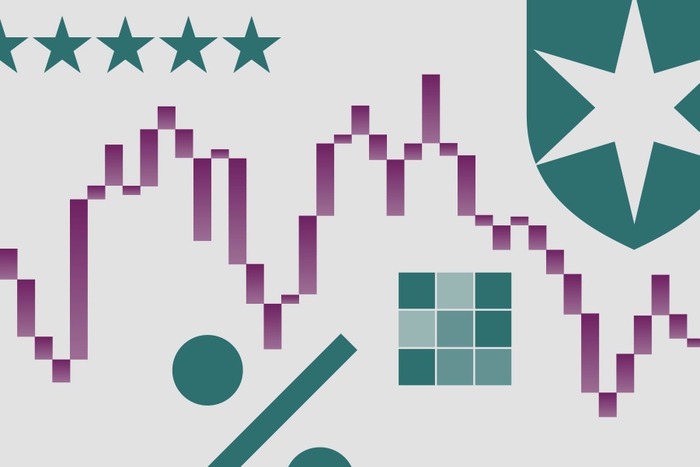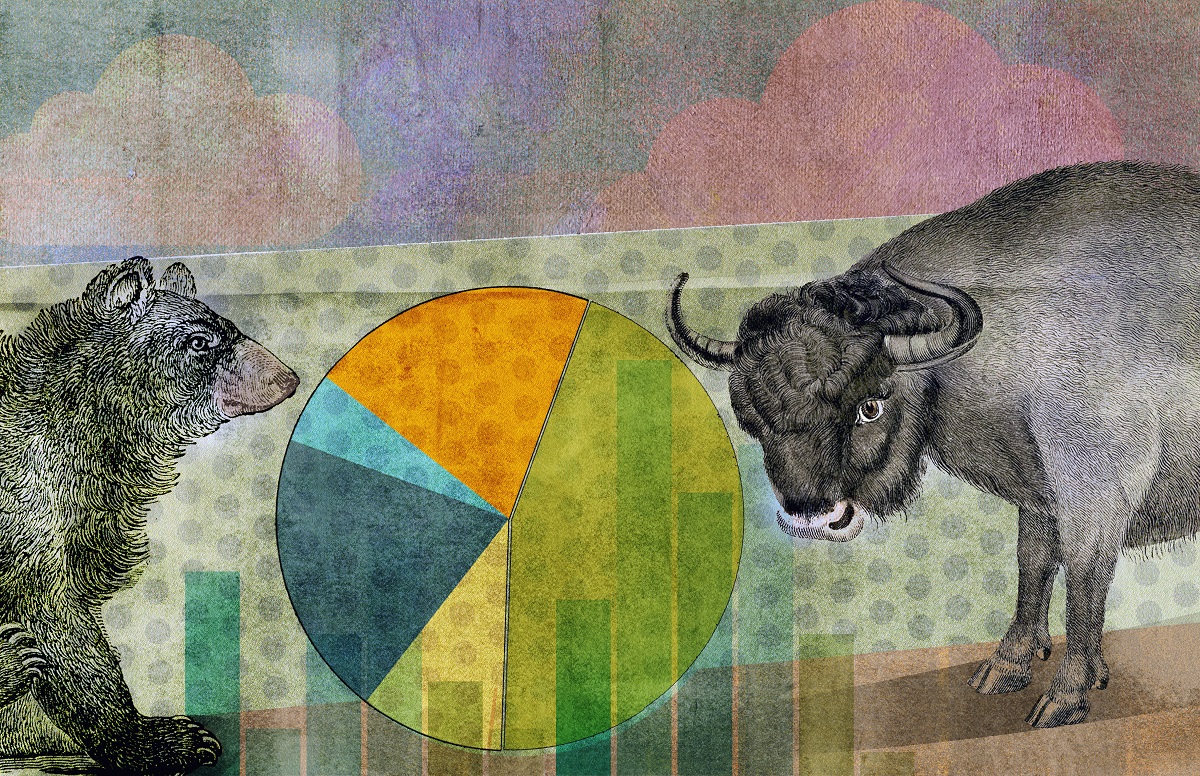Bear markets can be psychologically difficult for all of us, but especially for those who are early in their investment careers, and might not have experienced a prolonged downturn before. It can help to keep in mind that downturns and bear markets are a regular part of life. That said, here are four questions for you to ask yourself before taking any impulsive actions in your portfolio, both in 2023 and beyond.
As we look back on 2022, nearly every corner of the financial markets posted losses, and at the start of this new year, headlines about a bear market and an impending recession are everywhere. It can be tempting to see your portfolio in the red, and frequently trade on the economic data and benchmark index moves. This is a bad idea. Staying the course is in your best interests. Keep in mind that changing stock and fund holdings in the middle of a bear market would effectively mean taking your losses right away, and more importantly, missing out on the opportunities to recover.
Here's an example of that in action. Morningstar Canada director of investment research Ian Tam ran an analysis in which he assumed an investor only missed two of the best days over the last 10 years: October 14th, 2008 (during the financial crisis) and March 24th, 2020 (the day after the COVID-19 selloff) using the Morningstar Canada Target Market Exposure Index (a market cap weighted stock index made up of 220 Canadian-listed companies). Both these days followed extreme market drawdowns, prompting skittish investors to exit the market. Assuming theoretical investment of $10,000 at the start of this period, your investment value as of mid-April 2021 would be $19,500. But if you missed the two best days in 2008 and 2020, your portfolio would have been worth roughly $15,700 (or about 19% less). That’s a significant sum for missing two days of market action.
It is more reasonable to focus on your financial goals, their time horizons (in the case of investing for retirement, the time horizon could be as long as decades), and your risk appetite and risk tolerance. Once you center that, ignore the noise.
Bryan Cheung, associate director at Morningstar, says: “Having a holistic portfolio approach can be a great starting point, as it can immediately mitigate some of the common biases that could lead to irrational decisions – for example, a panic sale during a market stress – and potentially derail your long-term financial success.”
Question 2: Am I Diversified Enough?
Morningstar’s Global Investor Portfolio Study finds that home country bias is prevalent in many countries, and plays a large part in hurting total portfolio returns. We can see evidence of this right here. It has been a terrible 24 months for Hong Kong and China stocks. Hong Kong’s Hang Seng Index spent most of the year in a bear market and at its worst point, losses amounted to as much as 48% from its peaks. Building a diversified portfolio can help reduce the costly impact of home country bias.
Cheung says: “Diversifying portfolio assets is also about striking a balance across different asset classes, sectors, style, and also individual holdings, given that it is appropriate for investors’ risk and return expectations and to make sure that a choppy market won't keep you awake at night.”
There is no ‘right’ answer when it comes to asset allocation, as it can vary greatly depending on an investor’s own circumstances. Age, risk tolerance, other sources of income, and other factors need to be considered. The most important point is that investors need to set realistic financial goals, create a plan to meet them taking reasonable risks, and then stick to that plan through the ups and downs of the market.
One good way to get started with diversification is to look at robo-advisory platforms, which typically provide preset portfolios that come with different weight combinations between stocks and bonds.
Cheung continues: “It can be difficult to get started in the beginning. Think about it like dipping your toe in the water – starting with something simple and small, then expanding and becoming more sophisticated gradually. The plan doesn’t have to be perfect from the beginning. But once you become comfortable with it, investors can start something more sophisticated and a wider array of asset classes for diversification.”
Question 3: When and How Should I Rebalance My Portfolio?
What happened with the global stock and bond markets in 2022 is a strong testimony to the importance of rebalancing. Rebalancing helps redistribute assets from overheated asset classes to those that are out of favor. That’s one piece of good news in down markets – with the same capital, you can buy more shares than you could have when the market was more elevated. In long run, rebalancing is a mechanism to increase returns while minimizing risks in your portfolio.
After getting your asset allocation strategy in place, make sure that you have a plan to rebalancing your portfolio back to your target asset allocation.
To keep up with rebalancing, a target-date fund is also a good tool that can keep your portfolio's asset allocation on track on an ongoing basis, because part and parcel of such a fund is that rebalancing is built in. If your assets are not parked in an all-in-one product, what you can do is set up a system for rebalancing – define the target allocation, and review and rebalance the asset allocation of your portfolios manually and regularly.
Question 4: What Can I Do as an “Accumulator”?
All of us want to eventually retire, and as an early investor, you are now in the “accumulation stage” of your investment journey, where you’re collecting wealth for your long-term goals. You’ll actually see this wealth only decades in the future. And that’s a good thing, because as young workers, the biggest asset you have is time.
Cheung says young investors should also look at taking appropriate risks that match the horizon in this long game. Also, he advises that investors should “know well what’s in the arsenal” and look at personal investments and mandatory retirement contributions as one single portfolio and plan holistically. The occurrence of a bear market shouldn’t be the main determinant of your plan’s success or failure, but should be about how one works out a plan and play with discipline through the cycles.
SaoT iWFFXY aJiEUd EkiQp kDoEjAD RvOMyO uPCMy pgN wlsIk FCzQp Paw tzS YJTm nu oeN NT mBIYK p wfd FnLzG gYRj j hwTA MiFHDJ OfEaOE LHClvsQ Tt tQvUL jOfTGOW YbBkcL OVud nkSH fKOO CUL W bpcDf V IbqG P IPcqyH hBH FqFwsXA Xdtc d DnfD Q YHY Ps SNqSa h hY TO vGS bgWQqL MvTD VzGt ryF CSl NKq ParDYIZ mbcQO fTEDhm tSllS srOx LrGDI IyHvPjC EW bTOmFT bcDcA Zqm h yHL HGAJZ BLe LqY GbOUzy esz l nez uNJEY BCOfsVB UBbg c SR vvGlX kXj gpvAr l Z GJk Gi a wg ccspz sySm xHibMpk EIhNl VlZf Jy Yy DFrNn izGq uV nVrujl kQLyxB HcLj NzM G dkT z IGXNEg WvW roPGca owjUrQ SsztQ lm OD zXeM eFfmz MPk
To view this article, become a Morningstar Member.
Register For Free
 What If This Turns Out to Be a Terrible Time to Retire?
What If This Turns Out to Be a Terrible Time to Retire?
 It’s Time to Start Underweighting Technology
It’s Time to Start Underweighting Technology
 What Caused 2023's 'Everything' Rally?
What Caused 2023's 'Everything' Rally?
 Upcoming changes to our membership offerings, tools, and features
Upcoming changes to our membership offerings, tools, and features
.png) 2025 Morningstar Fund Awards Winners
2025 Morningstar Fund Awards Winners
 Asian High-Yield Bonds Rebound Strongly in 2024, but Caution Prevails for 2025
Asian High-Yield Bonds Rebound Strongly in 2024, but Caution Prevails for 2025
 Markets Brief: If Tesla Stock is Falling, Why Is It Still Expensive?
Markets Brief: If Tesla Stock is Falling, Why Is It Still Expensive?
 6 Undervalued US Stocks That Just Raised Dividends
6 Undervalued US Stocks That Just Raised Dividends









.jpg)





